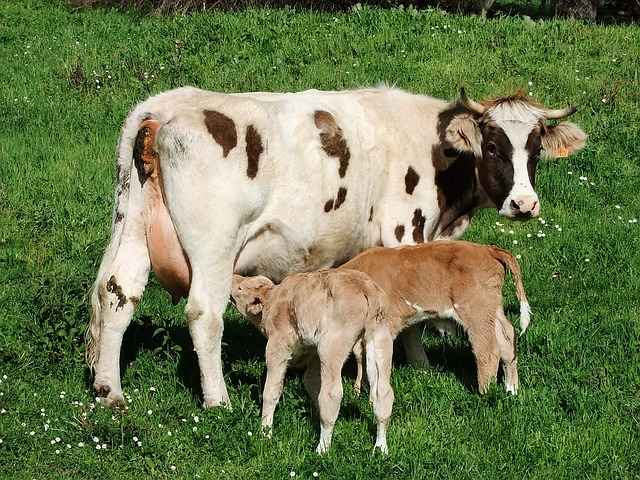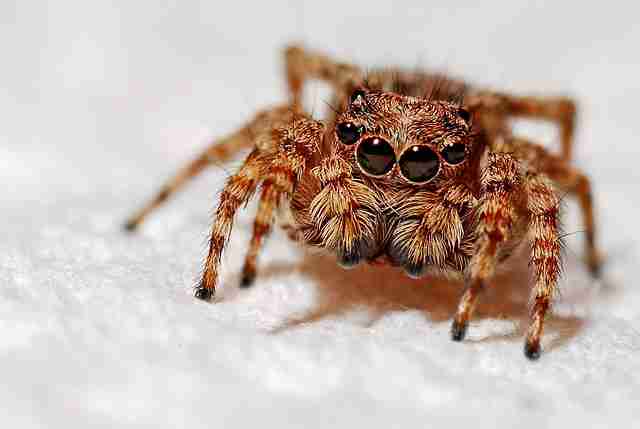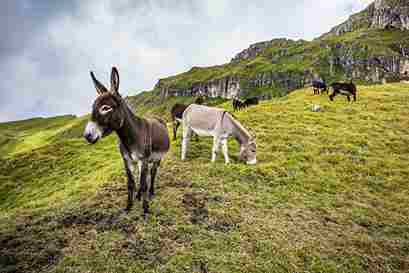Can Deer Smell Corn (Everything You Need to Know)
If you’re like me, the thought of having a deer graze on your land might sound exciting. I can’t explain it enough, but there’s always this rush of adrenaline I get whenever I see these wonderful creatures around. And it’s good to know that you can make this a common sight in your yard. If you’ve thought about attracting deer with corn, you may be wondering – can deer smell corn?
Yes, deer can smell corn. In fact, corn is a common attractant for deer due to the incredible ability of deer to smell corn over long distances. This is why you see many deer hunters use corn.
However, it’s recommended not to rely wholly on corn for feeding deer as this could harm the animal even on a short-term basis. Corn contains many acids that can potentially destroy the microorganisms in a deer’s digestive tract.
In this article, we will be answering some of the commonly asked questions about using corn as feed for deer. We will also explore some other alternatives.

Does Corn Attract Deer?
Yes, corn attracts deer.
Corn is undeniably one of the best deer attractants available, and it is also one of the cheapest.
Deer have a strong craving for corn, especially when it’s less sweet and high in starch like the Indian corn. This is why many hunters commonly make corn piles to bait deer.
If you want to make things more interesting, rub the corns with a little bit of peanut butter, and watch the deer scamper for miles just to get a taste of it. Another way to make the smell go farther is to mix the corn with horse feed. It works like magic!
Why do deer like corn?
Deer like corn mainly because of its nutritional content.
Corn contains a lot of starch, which is a good source of energy. In other words, deer derive energy by feeding on corn.
Besides providing daily energy, corn also plays a vital role in ensuring their survival during the cold seasons.
In addition to starch, corn is also rich in Phosphorus and calcium, which are also needed by deer.
Talking about the cold seasons, standing corn can serve as a cover for deer bedding and shelter. They can also provide lances for the animal to travel during this period.
With that said, deer are NOT to be fed with ONLY corn. While corn is a great source of energy, it is damaging to a deer’s digestive system. To put it more simply, deer have a hard time processing carbohydrate foods. Thus, when they eat too much of it, they become sick and may die. This is what is called acidosis. Apart from corn, other foods that can pose the same risks to deer are hay, meat and human food.
To crown it all, if you decide to feed deer with corn, then use it as a supplement. This is because a diet consisting of only corn or largely dominated by corn will lead to digestive problems, which can lead to death.
How far can deer smell?
Though not scientifically proven, it is believed that deer can smell corn up to 300 yards away. So, don’t be too surprised when you see deer travel that long just to satisfy its cravings. In fact, for certain types of corn, like the Indian corn, a deer can smell it 10 times further and will stay on the corn pile for a longer period of time.
If you want to make things more interesting, rub a little butter on the corn or mix the corn with horse feed.
The actual distance a deer would travel for corn may be influenced by the gender, age and wind direction.
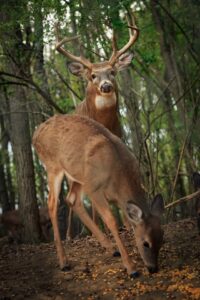
How long does it take for a deer to smell corn
This depends on several factors.
First is the direction of the wind. If you want the deer to smell the corn faster, you need to get it right with the wind direction.
Secondly, the travel route should also play a role. If the route is well travelled – which is often the case if there’s a lot of deer in the area – then it should take the deer 1-3 days to find the corn.
The size of the terrain and area and the position of the nearest deer are also important variables. If the deer is close by, then it shouldn’t even take up to a day. On some occasions, I have seen deer find corn baits within a few hours of placing them – sometimes as little as 2 hours.
Other factors that can play a role are the nature of the terrain, the population of the area, the location of the feed (its proximity to the roads), and how the corn is placed.
If you want to speed things up, consider sweetening the bait pile. You can add some cut apples, horse feed, molasses, or some other food sources that have more effect on deer.
What do deer like better than corn?
Corn is not the only food that attracts deer. There are other foods with a stronger scent and aroma that travel faster than corn and with more reach. A good example is peanut butter.
If you spread peanut butter on the legs of a feeder or the bark (or branches) of a tree, you will be amazed at how quickly the deer will come rushing to reach it. And that is because butter is a super attractant, so the scent travels faster.
Also, deer will stay longer at a spot smeared with peanut butter than they would at a corn feeder or bedding area. This is because the residue left behind by peanut butter usually outlast that of corn.
In areas where baiting is allowed, it is common for farmers (or hunters) to spice up their corn baits with peanut butter. Or spread it in the same area where they have the corn bedding. Even if the corn gets eaten up by other animals, the lingering smell of peanut butter will cause the deer to return to the trail.
Of course, peanut butter is not the only attractant for deer. Others include:
- Alfalfa
- Oats
- Soybean
- Legumes
- Apples
Some companies make specialty mixes of these foods (which might include corn). Besides having a better taste, these are usually safe and more nutritious and last longer than “just corn.”
How to bait deer with corn (3 Ways to Do it)
There are basically three ways you can bait deer with corn. First, you can grow your own food plot. Second, you can spread corn in the area where you want to lure the deer. Lastly, you can use an attractant that smells just like corn.
Growing Your Own Food Plot
A great way to get deer coming to your property without them suspecting anything is by using a food plot. In this case, you will need to clear out a portion of your yard to plant corn. While this method can be very effective, it may take a while.
Besides corn, you can grow other foods deer love, such as apples, alfalfa, or carrots.
Whatever food you’re planting, make sure it’s something that is scarce in the area, or else the deer might not be attracted to your food plot. Also, try to locate the food plot away from the road.
Spreading the Corn
Another way to bait deer with corn is to spread it around naturally in a way the deer won’t suspect. For example, it can be scattered under a tree and made to look like acorns dropping from a tree. Alternatively, you can place the corn inside an automatic feeder and have it scattered all through the day.
It’s worth noting that some states are against placing deer bait in bedding spots. If you’re a hunter, it’s best to have all bedding areas close to or in your hunting site. Ideally, it should be somewhere that gets a lot of deer traffic.
Using Attractants
Some companies produce attractants or synthetic counterparts of some natural foods. These synthetics smell just like natural food sources. You can employ the scent instead of the main food.
In the case of deer bating, you can use a corn-smelling attractant. Some good examples are:
- Lucky Buck (a mineral attractant you can use alone or mix with corn)
- 4s Wildlife Corn Spike (suitable for corn, pellets, and grain)
- Big&J Deadly Dust (Best mixed with corn)
- Heated Hunts (strong sweet corn scent to be sprayed around the surrounding area or directly on the ground)
These deer attractants can attract more deer from long distances. However, be sure they are allowed in your area.
Why Deer Have a Great Sense of Smell
Dogs are not the only ones with a strong sense of smell. Deer got it too! In fact, studies show that a deer’s sense of smell is about 500-1000 better than that of humans when it comes to accuracy. That is why it can tell your presence from miles away, even before it sees you, especially when you’re wearing a smelly cloth or drenched with alcohol or cigarette smoke.
So, what can we attribute to this incredible sense of smell? That would be their broader nostrils. Having such wide nostrils makes it easier for a deer to determine the source of a smell and where it’s coming from. This is an important skill for the animal as it uses it for survival.
So, unlike humans, a deer pays attention to every smell it perceives throughout the day.
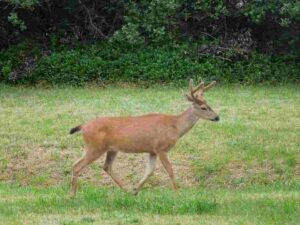
Conclusion: Can Deer Smell Corn?
From all indications, it’s quite obvious deer can smell corn. In fact, corn happens to be one of the more commonly used cheap deer attractants.
So, whether you’re looking to attract deer to your property for fun or lure them to a kill zone, corn can come in handy.
However, you ought to be mindful of how you use the corn and ensure you’re not doing anything illegal. Having a good understanding of the existing laws in your state regarding deer hunting and baiting is highly recommended. You don’t want to get caught using a method that is not legal in your area.
We have no doubt you will have good success with the methods described here.
References
https://www.tractorsupply.com/out-here_articles_wildlife_deer_bait-deer
http://www.farmanddairy.com/columns/feeding-corn-to-deer-could-be-death-sentence/14324.html

